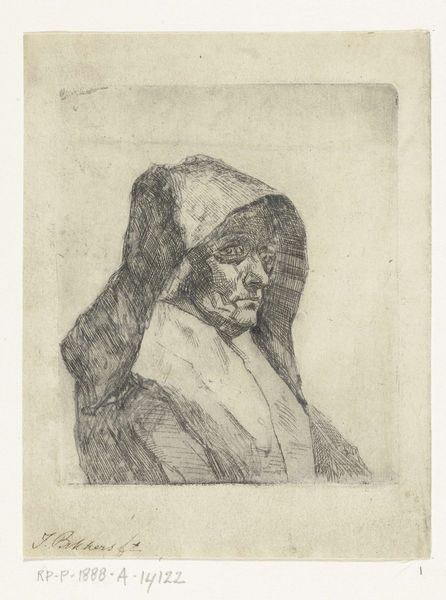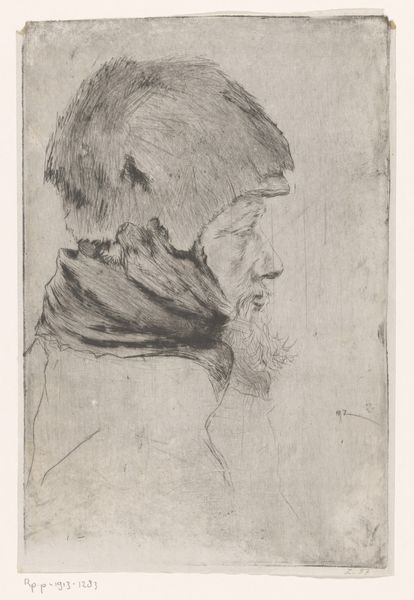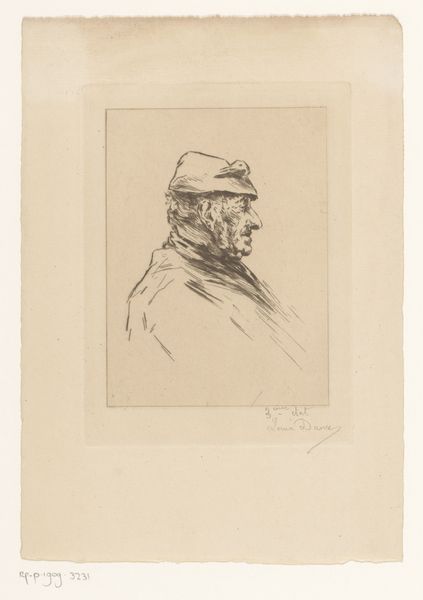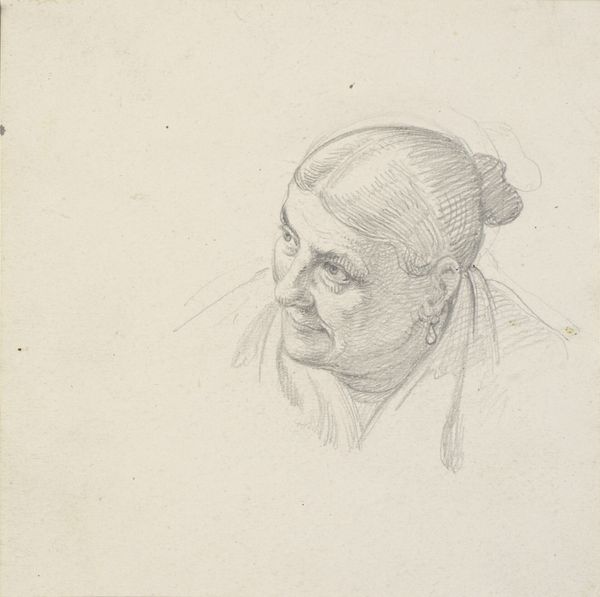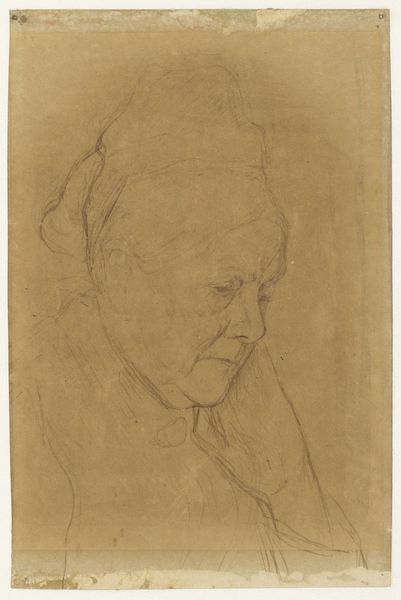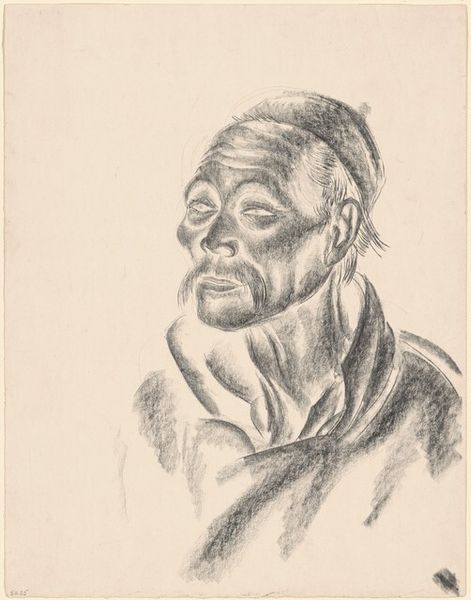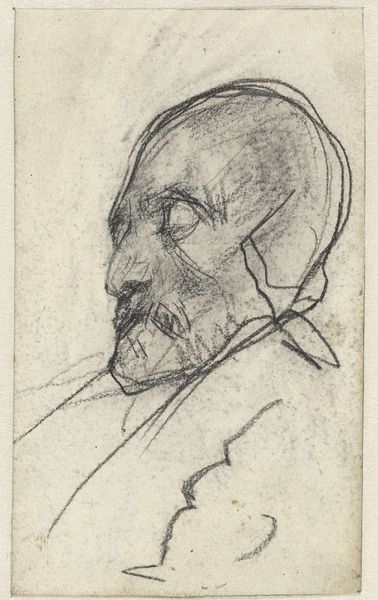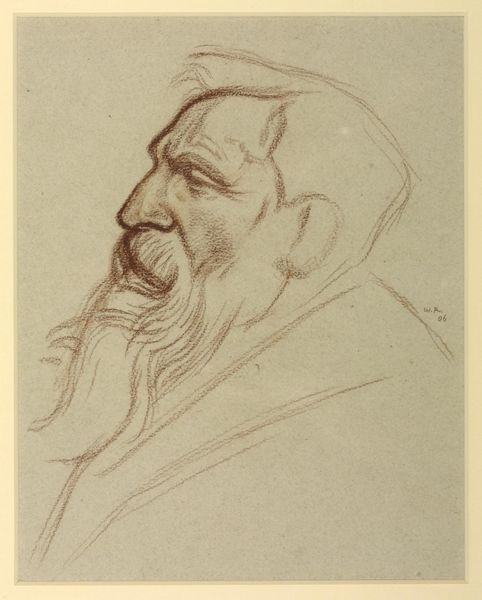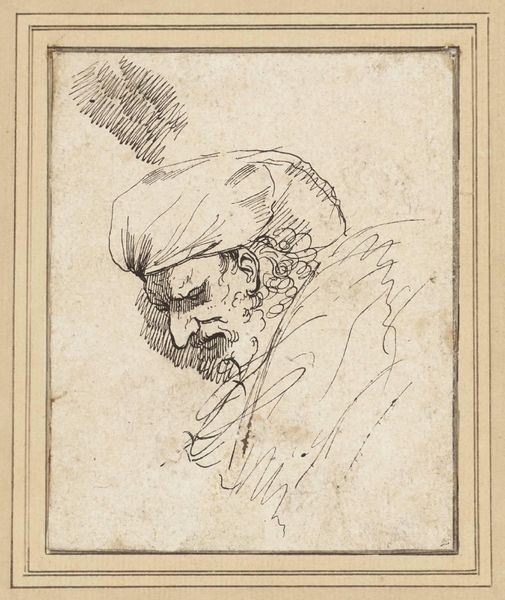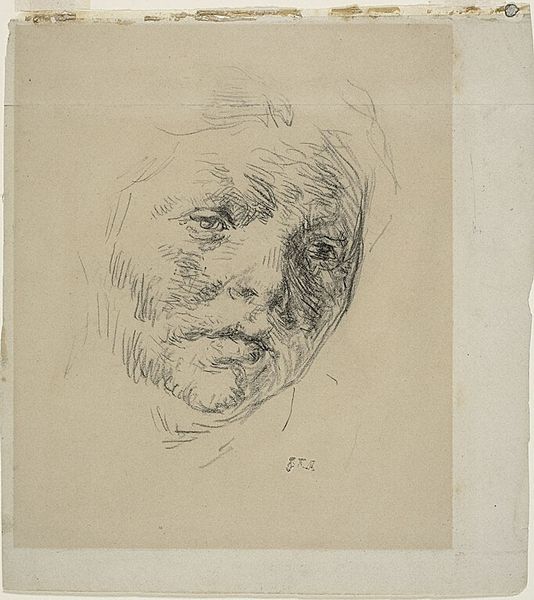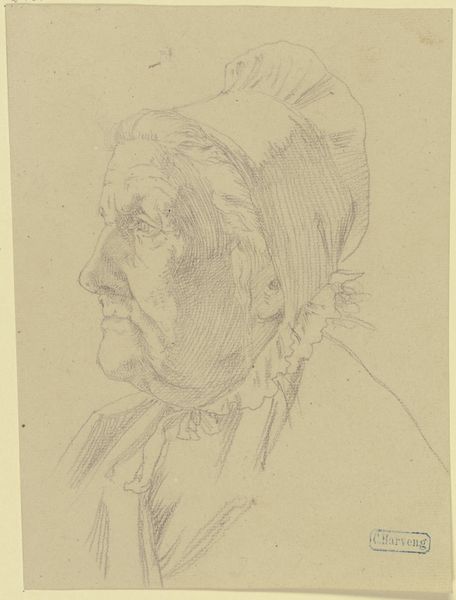
Dimensions: height 235 mm, width 150 mm
Copyright: Rijks Museum: Open Domain
Editor: Here we have Jan Veth’s “Boerenvrouw met kap, naar rechts,” which translates to "Farmer's Wife with a Cap, to the Right," dating from 1874 to 1925. It's a pencil drawing, currently held at the Rijksmuseum. I’m immediately struck by the artist's delicate use of line to capture the texture of the woman's cap and the folds of her skin. What draws your eye in this piece? Curator: The means of production are precisely where my analysis begins. Look closely: the evident pencil strokes, the seeming haste, or the artist's focused study. We see not only the finished work, but the *process* of creating it. This becomes paramount, not just as a portrait, but as a record of labor itself. Who was this woman? What role did she have in society? The materiality of this work, pencil on paper, speaks to accessibility, challenging the notions of high art being exclusively oil on canvas of wealthy patronage. Editor: I hadn't considered the accessibility aspect so directly. The sketch-like quality feels very immediate now. But how does this relate to social context, beyond the simple fact that she is a “farmer’s wife?" Curator: Exactly. Consider the social conditions and class structures. Was Veth seeking to ennoble labor? Was it mere academic exercise? Understanding these details can elevate our comprehension. Think about how labor was valued then, and who held power. What aspects of production and consumption might Veth’s work be reflecting, even subconsciously? Does it monumentalize labor or just represent it? Editor: I see what you mean. By examining the material choices and artistic process, we can unlock layers of meaning about labor, social status, and the artist’s potential motivations beyond a simple portrait. Curator: Precisely. So next time you engage, think less 'portrait' and more 'production', because even an intimate piece like this reverberates with socio-economic implications. Editor: Thank you; I will definitely think of that moving forward! I'll be sure to look deeper into those factors, analyzing beyond the initial image to explore context and process.
Comments
No comments
Be the first to comment and join the conversation on the ultimate creative platform.
